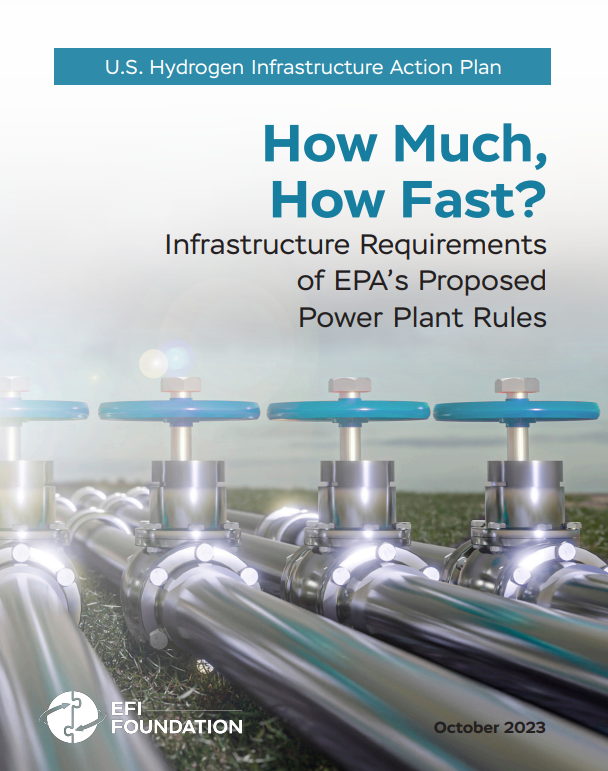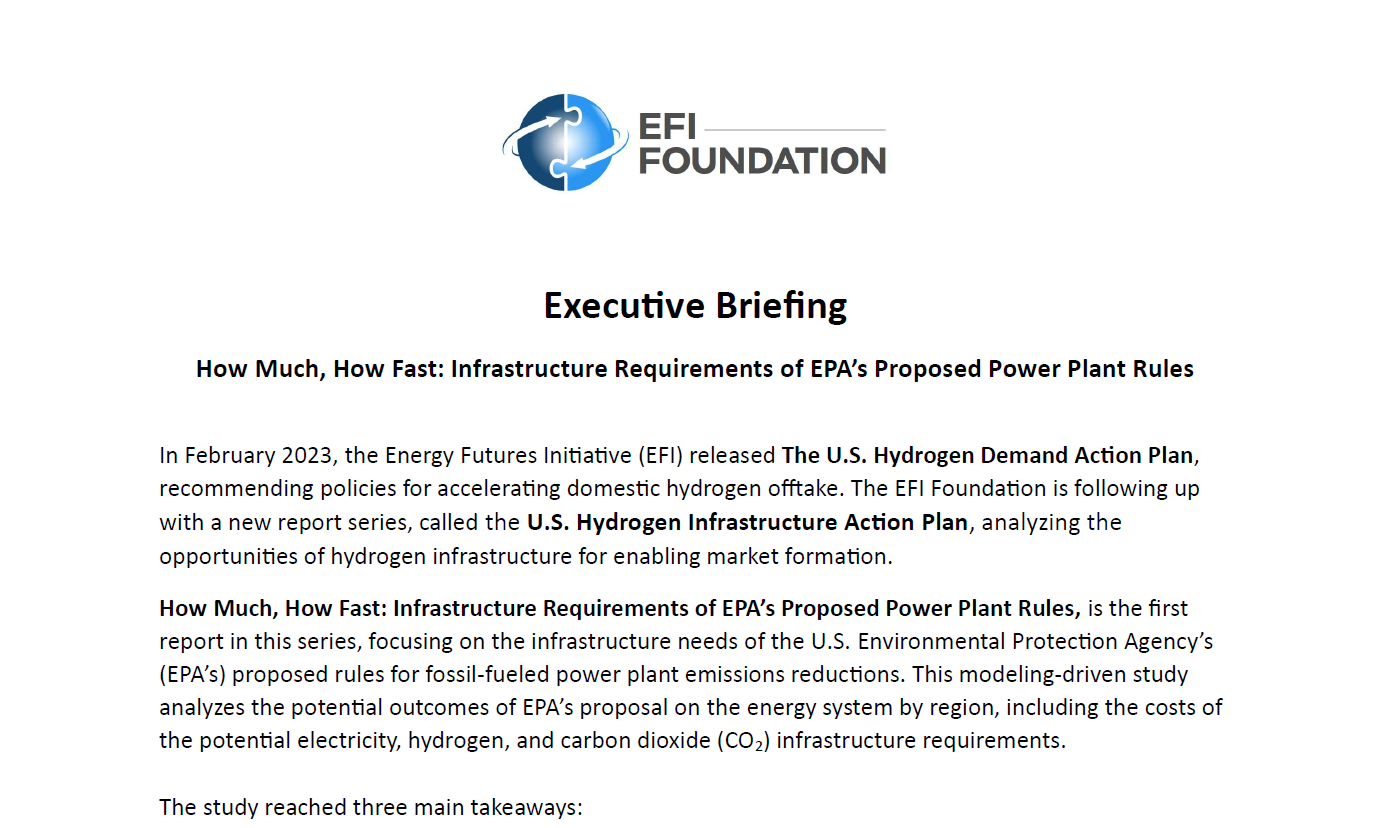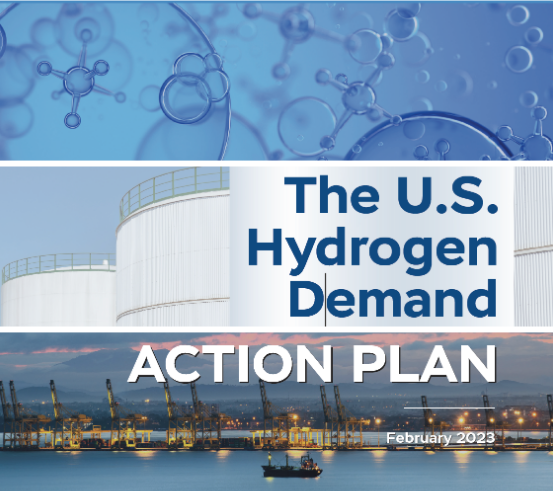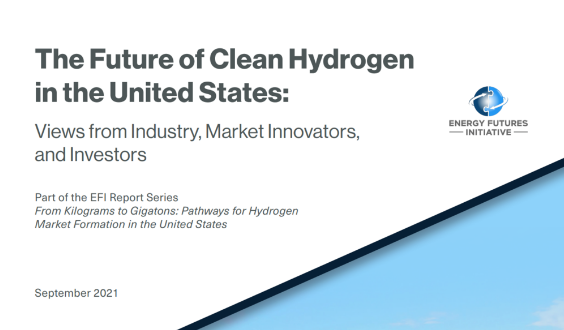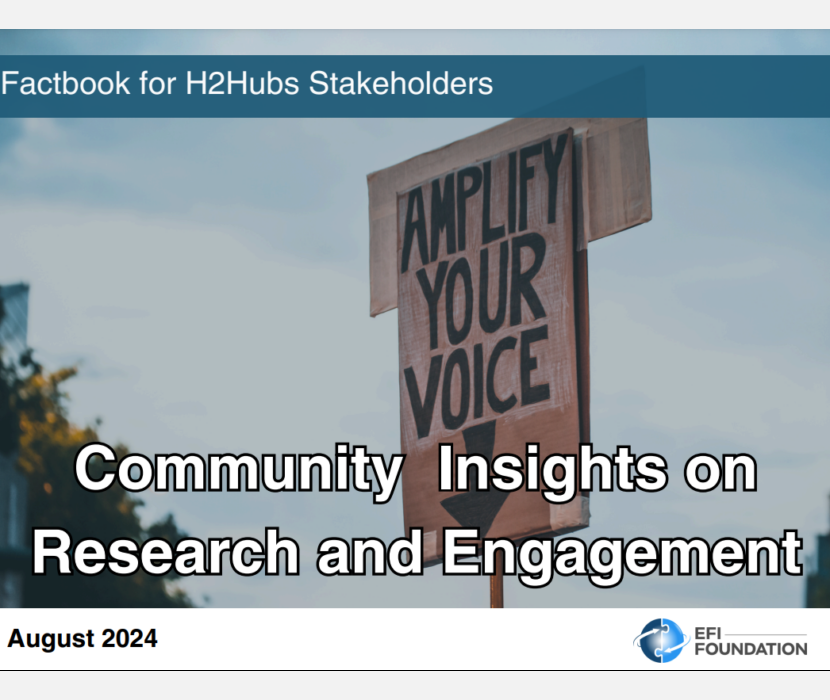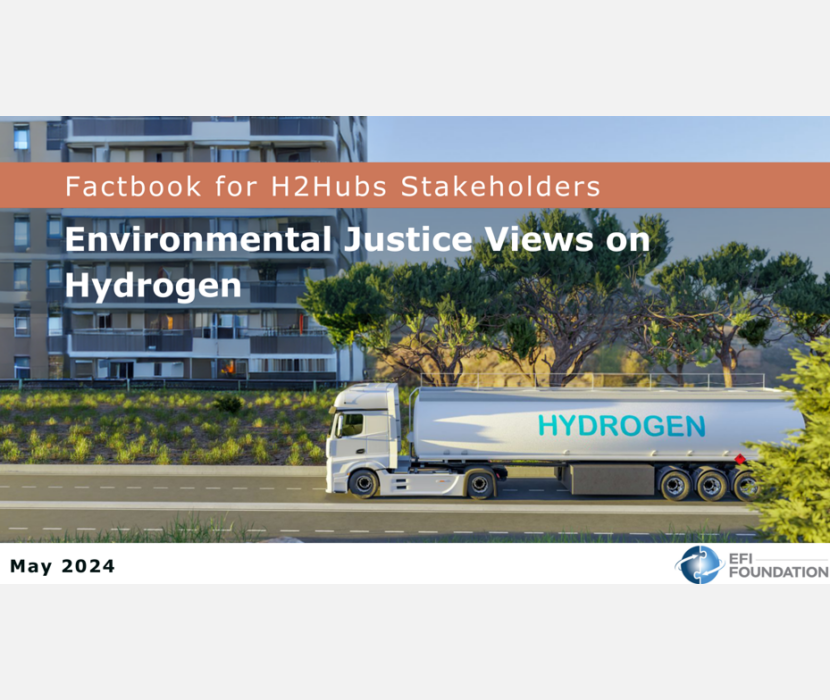How Much, How Fast: Infrastructure Requirements of EPA’s Proposed Power Plant Rules (October 2023) focuses on the infrastructure needs of the U.S. Environmental Protection Agency’s (EPA’s) proposed rules for fossil-fueled power plant emissions reductions. This modeling-driven study analyzes the potential outcomes of EPA’s proposal on the energy system by region, including the costs of the potential electricity, hydrogen, and carbon dioxide (CO2) infrastructure requirements.
The report is the first in a new report series called the U.S. Hydrogen Infrastructure Action Plan, which analyzes the opportunities of hydrogen infrastructure for enabling market formation. This series is a follow-up to the February 2023 Energy Futures Initiative (EFI) report, The U.S. Hydrogen Demand Action Plan, which recommended policies for accelerating domestic hydrogen offtake.
In May 2023, EPA proposed new emissions limits for fossil fuel-fired generators to align the sector’s decarbonization trajectory more closely with the Biden administration’s goals. The EFI Foundation analyzed the possible infrastructure requirements of EPA’s proposal using the Sustainable Energy System Analysis Modeling Environment (SESAME) modeling platform. This report features three main takeaways:
- EPA’s proposal reflects the need for very aggressive power sector decarbonization: The proposal could reduce power sector emissions by more than 40 million tons (Mt) per year from 2028 and 2042, and it requires all existing coal plants and large natural gas generators to adopt new emission reduction technologies starting in 2030 and 2032, respectively. EPA’s proposal specifies highly-efficient generation, blending clean hydrogen with natural gas, and carbon capture and storage (CCS) as the low-carbon technologies for compliance. Together, these technologies are also called “best system of emission reduction” (BSER).
- EPA’s proposal creates challenging timeframes for scaling new clean energy resources: Across all EFI Foundation scenarios, major infrastructure deployments are needed in the next decade. Without these developments, implementing EPA’s infrastructure requirements could be limited, especially due to the highly decentralized nature of fossil generators and regional electricity structures. Complementary permitting reform for electricity, hydrogen, and CO2 systems will be necessary for implementation. Due to the cross-jurisdictional nature of these projects, this reform will need to greatly improve coordination between firms, sectors, and governments.
- EPA’s proposal creates opportunities to advance CCS and clean hydrogen deployment: EPA’s current proposal faces major implementation challenges, considering the amount of infrastructure that could be needed in the next decade to support potentially hundreds of new and existing generators throughout the country. EPA should consider ways to add flexibility, and more regionality, to its approaches to ensure large-scale decarbonization efforts are deployed moving forward. This report provides examples of how EPA and other relevant federal and state agencies can support CCS and clean hydrogen in electric sector decarbonization.
This report helps evaluate the systemwide impacts of EPA’s proposal, especially in terms of the scale, timing, and feasibility of potential infrastructure requirements.
Supplementary Material
Related Content
(Share this post with others.)


